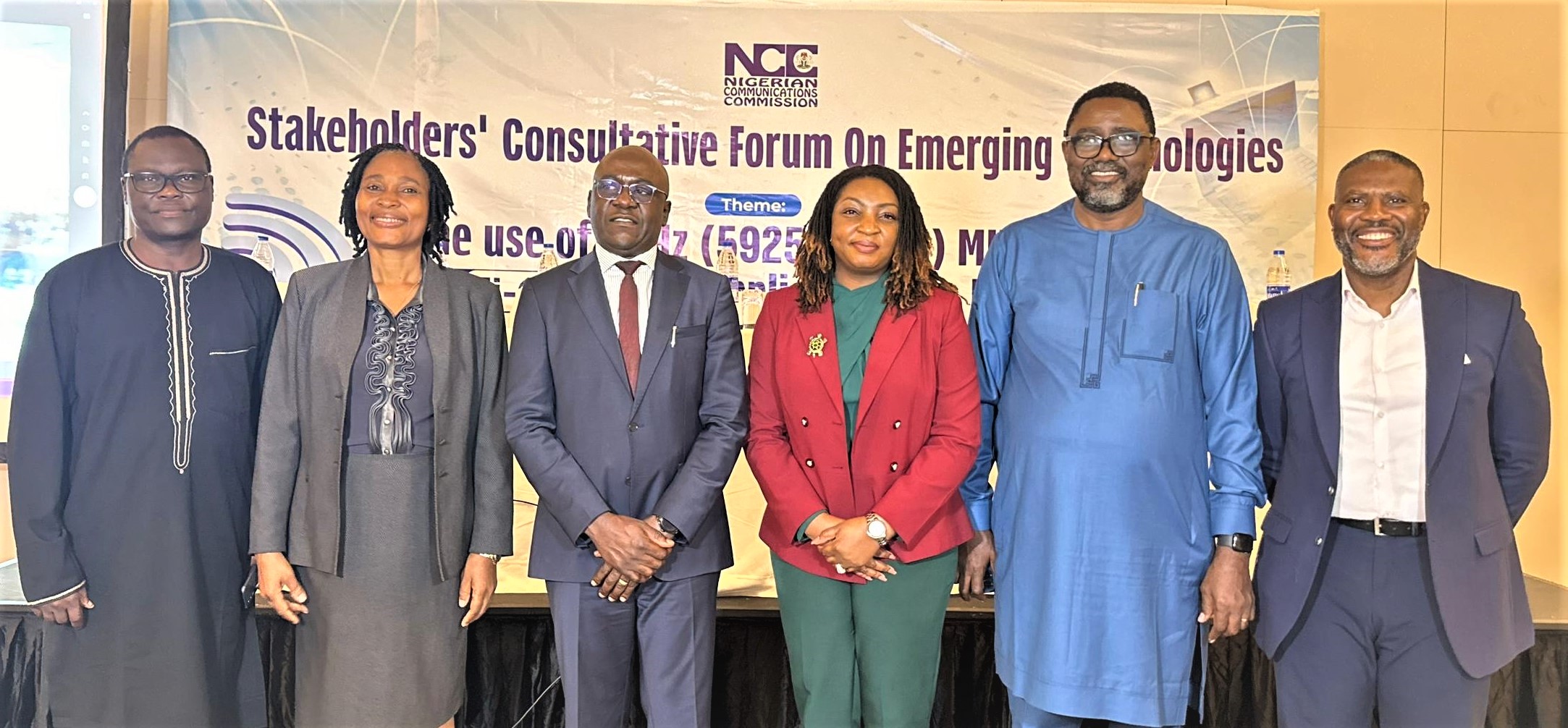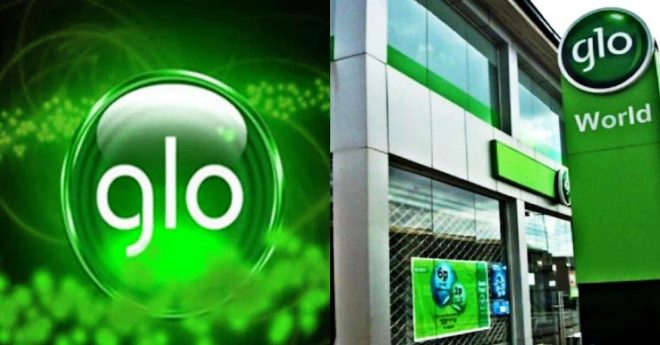Nigeria is looking at deploying the 6 gigahertz (GHz) band for Wi-Fi and International Mobile Telecommunications (IMT) applications.
Her telecom sector regulator, the Nigerian Communications Commission (NCC) today in Lagos said its in line with 2023 World Radiocommunications Conference (WRC-23) which allocated the 6GHz band for Wi-Fi and IMT applications to deepen access to the internet.
Executive Vice Chairman/CEO of the Commission, Dr. Aminu Maida, said the 5GHz and 2.4GHz currently in use for Wi-Fi (Wi-Fi 5) are becoming saturated due to an increase in demand for capacity.
It is therefore imperative to identify other frequency bands to complement the 5GHz and 2.4GHz, he said during the Annual Stakeholders Consultative Forum on Emerging Technologies.
Represented by the Executive Commissioner, Technical Services at NCC, Abraham Oshadami, the EVC said when President Bola Tinubu brought the current management of the Commission on board last year,the management took a decision to reposition the Commission on a path that will ensure the uptake of opportunities through strategic focus areas which is driven by the recognition stakeholders whether it is licensees and industry operators, consumers or government maintains unique perspective and have certain expectations of as the Commission.
Reasons for taking action
He said: “Guided by our actions in the right direction and, of course, that of the Federal Government through the Minister’s Strategic Blueprint cantered around knowledge policies, infrastructure, innovation, entrepreneurship and capital as well trade, we have been able to set the ball rolling to enhance telecommunication service delivery in Nigeria.
“The 6GHz band, spanning from 5925 MHz to 7125 MHz, offers a substantial increase in available spectrum, which is crucial for supporting the growing demand for high-speed internet and advanced applications Wi-Fi plays a crucial role in the distribution of fixed broadband connectivity in homes, offices, and various other environments.
“The vast majority of home internet traffic is connected to the end-user through Wi-Fi. In enterprise settings, Wi-Fi is essential for handling large amounts of data and simultaneously connecting large numbers of devices with improved reliability, higher data throughput, and lower latencies.
“However, the 5GHz and 2.4GHz that are being used for Wi-Fi (Wi-Fi 5) at the moment are becoming overwhelmed due to an increase in demand for capacity. It is, therefore, imperative to identify other frequency bands to complement the 5GHz and 2.4GHz.
“The recently concluded 2023 World Radiocommunications Conference (WRC-23) allocated the 6GHz band for Wi-Fi and IMT applications with different recommendations on how to use the band. This was the outcome of a long study cycle process leading to the decision at the WRC-2023 in Dubai, United Arab Emirates,” Dr Maida said.
“The 5GHz and 2.4GHz that are being used for Wi-Fi (Wi-Fi 5) at the moment are becoming overwhelmed due to an increase in demand for capacity. It is, therefore, imperative to identify other frequency bands to complement the 5GHz and 2.4GHz“
Also speaking, Head, Spectrum Administration at NCC, Engr. Atiku Lawal, said with the overcrowded airwaves is currently limiting the potential of Wi-Fi in the 2.4GHz and 5GHz, adding that it is not a surprise that more than 70 countries have already acted, or are considering acting, to open the 6GHz band for unlicensed Wi-Fi use.
“Depending upon the country’s implementation plan, this decision will provide two to three times the quantum of Spectrum available today, resulting in the ability to implement 80MHz and 160 MHz channels being available for the new Wi-Fi 6 standard ideal to support digital transformation efforts and use cases like high definition video and X Reality (XR). Further to this, additionally, capacity in the unlicensed use of the 6GHz band for Wi-Fi will improve Quality of Service (QoS) through Wi-Fi 6 offload as the use of Wi-Fi at home, offices, institutions, airports etc. will help relieve networks of capacity constraints by taking devices of the cellular networks,” he said.
Chairman, Association of Licensed Telecoms Operators of Nigeria (ALTON), Gbenga Adebayo, pleaded with the Federal Government to assist operators in the area of funding as upgrading to the new spectrum would require cash.
This appeal is coming on the heels of the fact that operators are struggling to expand their networks,
Adebayo, who was represented by the Executive Secretary, ALTON, Gbolahan Awonuga, said: “The ICT industry has done a lot for the country and i believe the sector should not be neglected. We are not isolated from the harsh financial ecosystem. We need money to upgrade our infrastructure and import equipment, so as for us to benefit from the 6GHz. Our members are struggling to expand their infrastructure. We appeal to the federal government to come to our aids.”
Also speaking, President, Association of Telecommunications Companies of Nigeria (ATCON), Tony Izuagbe Emoekpere, said the 6GHz band represents a critical asset for future telecommunications growth, while calling for the need to balance the needs of unlicensed useWiFi-6 with the equally important licensed spectrum needed for IMT.
Deploying services on the 6GHz band will also require significant investments in upgrading infrastructure, both for mobile networks and WiFi systems, Emoekpere said, adding that Telecom operators and Internet Service Providers (ISPs) must have the capacity to absorb this new technology. “Policies that foster public-private partnerships, reduce Right of Way (RoW) charges, and simplify regulatory hurdles will be critical to achieving the infrastructure expansion necessary for a successful deployment.
“A particular consideration here is the role of smaller, local ISPs who may not have the financial capacity to compete for high-cost licensed spectrum but can greatly benefit from the unlicensed spectrum provided by WiFi-6. Supporting these smaller ISPs will encourage their proliferation, contributing significantly to broadband penetration in underserved and rural areas.
“One of the most exciting promises of WiFi-6 and IMT deployment is its potential to bring high-speed, low-latency internet to underserved and rural areas,” Emoekpere said.
“A particular consideration here is the role of smaller, local ISPs who may not have the financial capacity to compete for high-cost licensed spectrum but can greatly benefit from the unlicensed spectrum provided by WiFi-6. Supporting these smaller ISPs will encourage their proliferation, contributing significantly to broadband penetration in underserved and rural areas.“
He urged NCC to ensure that the regulatory framework fosters inclusive access and equitable distribution of this technology. “Affordability should remain a key concern, and consumer protection policies must accompany technological advances to avoid creating or widening digital divides,” he stated.






